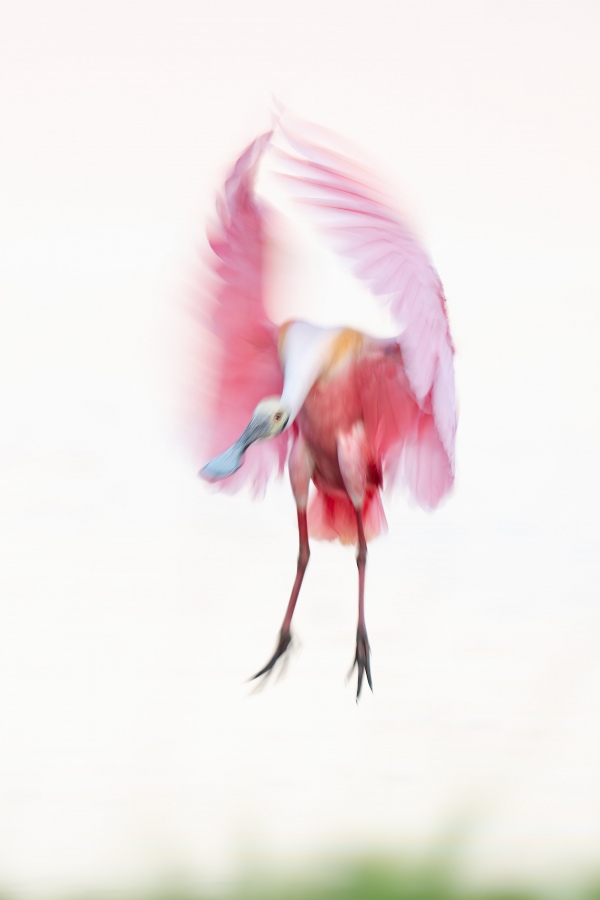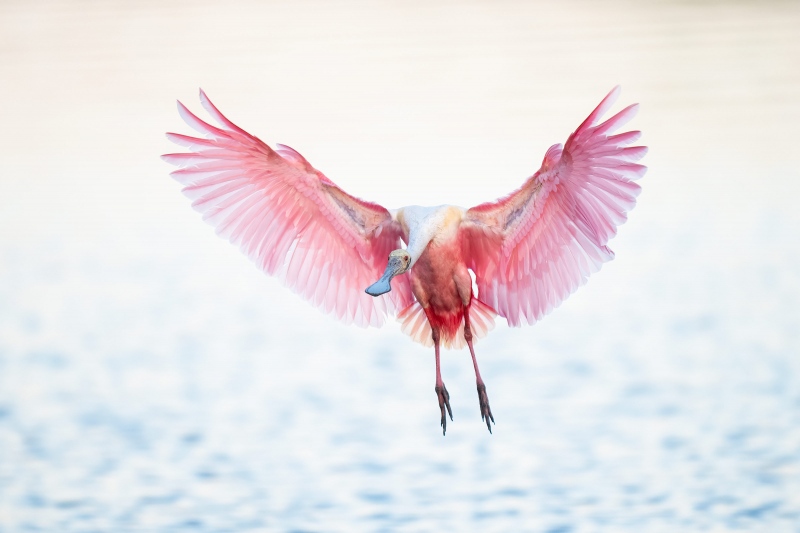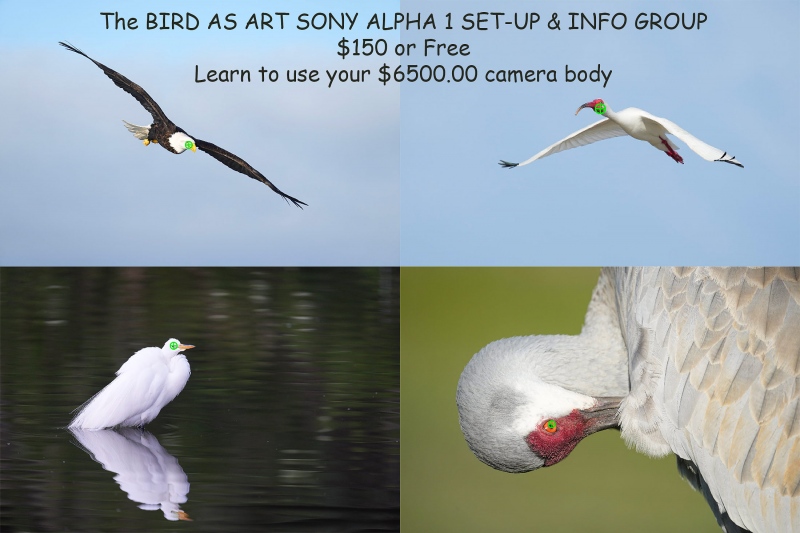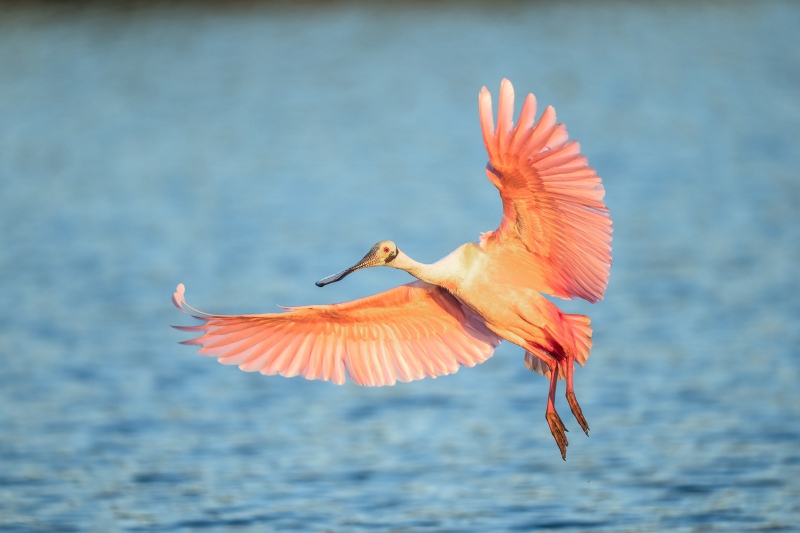Stick Marsh In-the-Field Sessions
I am offering two Stick Marsh In-the-Field Sessions later this week: $300 for two solid hours of detailed photographic instruction. There are many reasons to attend one or both of these sessions. If you are at all interested in learning why or in joining me, please get in touch via e-mail immediately.
Galapagos 2023 Opening
Due to a cancellation, I have an opening for a single male photographer on the Galapagos 2023 Photo-Cruise of a Lifetime IPT, the world’s finest photographic cruise of the famed archipelago. I am offering it with a substantial discount. If you are interested in joining a great group, or have questions, please get in touch via e-mail ASAP.
Iceland
My decades-long dream of spending time on Grimsey Island, Iceland, with the puffins — 13 days in this case!, will be realized this coming July. I am doing back-to-back trips as a participant. If anyone would like information on the world’s greatest Iceland/Atlantic Puffin trip this coming July, please contact me via e-mail.
Dunce of the Year Award for Mr. Famous Bird Photographer
I was in bed at 7:30pm on Saturday but did not fall asleep until after 12:30am; with the time change (spring ahead), that was effectively 1:30am! Not to mention that I almost always fall asleep within minutes. I woke at 5:00am. Probably some sort of jetlag from the Alaska trip. Anyhoo, I grabbed the 200-600 to do some pre-dawn blurs. No matter how high I raised the ISO (12,800) and how low I set the shutter speed (1/2 sec.), I was not seeing any Zebras. I was quite confused. I thought that the real time exposure feature had inadvertently been turned off, so I headed back to the rest of my gear, saved the settings on my other a1, and loaded them onto the one I was using. The same thing happened. I was at a loss.
There were more than 500 Cattle Egrets roosting on the two rookery islands, perhaps as many as one thousand. When an airboat turned on its engine, all the birds blasted off at once in a huge, tight ball set against the pink/blue/purple sky to the west. It was glorious — perfect fodder for creating spectacular pleasingly blurred blastoff images. But I was dead in the water. Just after that, I realized that I had not removed the lens cap from the 200-600. My excuse is that I only use it when traveling by plane 🙁 As when returning from Homer.
My First 2023 Stick Marsh Visit
Recently, I had been hearing reports of lots of spoonbills at Stick Marsh and made my first 2023 visit yesterday. The Structure S-96 Rehabilitation Project was finished many months ago, but my gut feeling is that the number of nesting pairs is — as was the case last season, less than it was two years ago. There was lots of flight action early but then the wind died, and things slowed down. Stick Marsh is vastly different than it had been for the past several years. I will detail the changes and suggest new and different photographic strategies in the next Stick Marsh Site Guide e-Mail Update that will be published after my next visits later this week.
The Stick Marsh Site Guide Subscription Service
The Site Guide Subscription Service is a new concept. I e-mailed the first issue in late-March 2022. The Basics e-mail includes specific directions to the site, and a map of the rookery area with specific instructions and wind, weather, and where-to-be advice. Sign up now to receive last year’s five e-mails and next week’s update.
To sign up for the Stick Marsh Site Guide Subscription Service, call Jim in the office weekday afternoons at 863-692-0906 with your credit card in hand or send a PayPal for the $100.00 to us at birdsasart@verizon.net. Please be sure to include the words Stick Marsh with your PayPal.
I fully understand that you can go to Google Maps, find the Stick Marsh, visit, and likely make some good images. You might think, I can do fine just without artie’s advice. But you will do a whole lot better with it. Especially considering the new conditions I encountered yesterday.
What’s Up?
Please remember that the blog is designed to be interactive. The more you consider the questions, the more your photography will improve. Leaving a comment is the icing on the cake. Please do share any and all blog posts with photography friends. Thanks to those who commented on yesterday’s tight Bald Eagle flight head shots. I agree with most of those who selected Image #2 as their favorite. I used the Sony 70-200mm f/2.8 GM II lens with the 1.4X TC at 280mm to make yesterday’s images. A7INFO shows the Focus Distance as 4.96 meters (16.27 feet) but I believe that the distances shown when TCs are used are inflated, not by A7INFO, but by the Sony EXIF. The bird seemed to be about ten feet from me. I believe that the Focus Distances in A7INFO are correct with bare telephoto lens but are incorrect when a TC is added to the mix. I will do some tests soon to see if I am correct.
There was lots of action early on at Stick Marsh and it was good catching up with Clemens Van der Werf; he and Adri are headed back to their new home in The Netherlands this afternoon.
Today is Monday 13 March 2023. I was up early and will be heading down to the lake for a bit despite the poor-for-bird-photography forecast of partly cloudy becoming sunny early with a SW wind. This blog post took more than two hours to prepare and makes three hundred forty-eight days in a row with a new educational post written just for you. Wherever you are and whatever you are doing, I hope that you too have a great day.
My plan is to continue to post every day until the streak reaches one year and one day and then begin posting every other day.
Please remember to use the B&H and Amazon links that are found on most blog pages and to use the BIRDSASART discount code at checkout when purchasing your new gear from Bedfords to get 3% back on your credit card and enjoy free second-day air FedEx. Please, also, consider joining a BAA IPT. You will be amazed at how much you will learn!
You can find some great photo accessories (and necessities, like surf booties!) on Amazon by clicking on the Stuff tab on the orange/yellow menu bar above. On a related note, it would be extremely helpful if blog-folks who, like me, spend too much money on Amazon, would get in the habit of clicking on the Amazon logo link on the right side of each blog post when they shop online. As you might expect, doing so will not cost you a single penny, but would be appreciated tremendously by yours truly. And doing so, works seamlessly with your Amazon Prime account.
Please remember that if an item — a Delkin flash card, or a tripod head — for example, that is available from B&H and/or Bedfords, is also available in the BAA Online Store, it would be great, and greatly appreciated, if you would opt to purchase from us. We will match any price. Please remember also to use my B&H affiliate links or to earn 3% cash back at Bedfords by using the BIRDSASART discount code at checkout for your major gear purchases. Doing either often earns you free guides and/or discounts. And always earns my great appreciation.
|
|
|
This image was created on 12 March 2023 at Stick Marsh in Fellsmere, FL. Seated, I used the handheld Sony FE 400mm f/2.8 GM OSS lens and The One, the Sony Alpha 1 Mirrorless Digital Camera). The exposure was (sort of) determined via Zebra technology with Exposure Compensation Thumb Dial. AUTO ISO set ISO 100. Multi-metering +2 stops in Shutter Priority: 1/40 sec. at f/4. When evaluated in RawDigger, the raw file exposure was determined to be almost one stop too dark (at +2 stops!) AWB at 7:39:56am in pre-dawn light. Tracking: Zone AF-C with Bird Face/Eye detection enabled performed to perfection. Be sure to click on the image to enjoy a high-res version. Image #1: Roseate Spoonbill landing blur |
Shutter Priority
If you believe that real photographers should be using Manual mode 100% of the time, you are sadly wrong. There are instances when using Shutter (or even Aperture) priority with AUTO ISO when faced with consistently toned backgrounds is the fastest, most efficient way to work. That said, I am dead set against using Manual mode with AUTO ISO in any and all situations. I was properly set up for blurs yesterday morning — Shutter Priority at 1/15 second plus two-stops with AUTO ISO — when the Cattle Egret flock blasted off. I would have been famous had I taken off the lens cap before the blessed event took place. If that ever happens again, I will be a lot quicker to realize the problem. Live and learn, even after four decades.
|
|
|
This image was also created on 12 March 2023 at Stick Marsh in Fellsmere, FL. Again, while seated, I used the handheld Sony FE 400mm f/2.8 GM OSS lens and The One, the Sony Alpha 1 Mirrorless Digital Camera). The exposure was determined via Zebra technology with ISO on the Thumb Dial. ISO 2000. 1/2000 sec. at f/2.8 (wide-open) in Manual mode. When evaluated in RawDigger, the raw file brightness was determined to be perfect. AWB at 7:42:06am before the sun was on the birds. Tracking: Zone AF-C with Bird Face/Eye detection enabled performed to perfection. Be sure to click on the image to enjoy a high-res version. Image #2: Roseate Spoonbill braking to land |
The Sony 400mm f/2.8 Lens
The lens that I advised against for well more than three decades continues to shine in a variety of situations. At times, it is the perfect focal length for low light flight photography. Yesterday morning that was true in spades. Almost every flight shot was razor-sharp on the bird’s eye. Most amazing is that the speed of initial focusing acquisition is faster and the accuracy of the eye tracking at f/2.8 is vastly improved when compared to the same parameters at f/4 (especially when using Tracking Zone for flight). Again yesterday, I had no problem handholding it for flight while seated and supporting the rig on my left knee in the rest position.
Right now, it is a lot more difficult to find a Sony 400mm f/2.8 lens in stock than it is to find a Sony 600mm f/4. Huge thanks to Fred Innamorato for using the BIRDSASART discount code at Bedfords to order his Sony 400mm f/2.8. He has been waiting patiently for months; his lens will be arriving this week! As much as I have been loving the 400 2.8 and finding new uses for it recently, I still recommend the 600mm f/4 for most folks. If you are facing that dilemma, please shoot me an e-mail to discuss. I’d be more than glad to help.
|
|
|
Click on the image to better see the green eye-AF boxes in action. Sony Alpha 1 Flight Photography AF Points! |
The SONY Alpha a1 Set-up Guide and Info Group: $150.00 (or Free)
The SONY Alpha a1 Set-up Guide and Info Group is going great guns as more and more folks chime in with thoughtful questions and experience-based answers. As the a1 is becoming more readily available, more and more folks are getting their hands on this amazing body. By June 1, 2022, the group was up to an astounding 124 lucky and blessed folks. (More than a few folks own two or more a1 bodies! Early on, we discussed the myriad AF options. I gave my opinion as to the best one for flight and general bird photography. The best news is that everyone in the group receives an e-mail that includes a .DAT file with my a1 settings on it, and explicit directions on how to load my settings onto your a1; talk about convenience! I am now offering a .DAT file compatible with firmware update 1.20. Your entry into the group includes a consolidated Sony a1 CAMSETA2 INFO & GUIDE. New a1 folks will now receive six e-mails instead of the previous 28! You will receive new e-mails as they are published. Simply put, this e-mail guide is an incredible resource for anyone with an a1.
All who purchased their Alpha 1 bodies via a BAA affiliate link — B&H or Bedfords — will receive a free Sony Alpha a1 Set-Up Guide and free entry into the Info Updates group after shooting me their receipts via e-mail. (Note: it may take me several days to confirm B&H orders.). Others can purchase their guide here in the BAA Online Store.
|
|
|
This image was also created on 12 March 2023 at Stick Marsh in Fellsmere, FL. best again, while seated, I used the handheld Sony FE 400mm f/2.8 GM OSS lens and The One, the Sony Alpha 1 Mirrorless Digital Camera). The exposure was determined via Zebra technology with ISO on the Thumb Dial. ISO 1250. 1/3200 sec. at f/2.8 (wide-open) in Manual mode. When evaluated in RawDigger, the raw file brightness was determined to be dead-solid perfect. AWB at 7:52:12am with the sun just on the birds. Tracking: Zone AF-C with Bird Face/Eye detection enabled performed to perfection. Be sure to click on the image to enjoy a high-res version. Image #3: Incoming Roseate Spoonbill |
Your Call?
Which of today’s three featured images is your favorite? Why? If you like, rank the three images with your favorite one first and your least favorite last.
Do you prefer the images made in the shade (1 & 2) of the image made in early morning light (3)?
I will share my rankings and very favorite image of the three with your here tomorrow and let you know why I made my choice.
Typos
With all blog posts, feel free to e-mail or to leave a comment regarding any typos or errors.


















Artie,
I am slightly confused. You have stated you are dead set against using auto iso in manual mode. I don’t own Sony (canon) but as I understand you predominantly adjust your iso until you see zebras.
Using auto iso, if you adjust ec for the zebras it will be adjusting your iso, so isn’t it the same?
Good question, Al. When creating pleasing blurs or when working against backgrounds of a consistent tone, AUTO ISO in Manual mode works well. But the folks who are using it for general bird photography cannot possibly come up with the correct exposure as in nature, the backgrounds change from one second to the next. Nobody can set or change the EC as fast as the backgrounds change. The is why Manual Mode is best, with the photographer setting the ISO for the subject in constant light.
a
2,3, 1 in order of preference but all are gorgeous!
Thanks for sharing the lens cap story, funny!
Thanks. It was not funny when it happened 🙁
a
I do enjoy a well-executed blur image. I’m sometimes a bit too picky on trying to get the eye or head sharp and this image I think proves its not necessary if the rest of the image has some nice visual appeal. Many commenters really seem to like it. Why do you think this image works so well?
Thanks, Mark. The elegant pose, the soft light and colors, and the sense that the bird is in motion all do it for me. As in tomorrow’s blog post, I have no need for a sharp eye in a pleasing blur. If I get one, great. If not, maybe great also (as with Image #1).
a
Image #1 of Roseate Spoonbill is not a good picture. It looks like it was taken at the wrong speed. Image #2 and image #3 Roseate Spoonbill are good and better made then image #1.
Or perhaps it was taken at the perfectly correct speed. Many folks including me made it their first choice.’
a
#2. You don’t need golden hour to make spectacular color!
Funny lens cap story. I remember observing photo journalists in the late 70’s – early 80’s changing lenses and returning them to their bag without lens caps or mount caps. I thought, don’t they care about their gear? I realized they were just doing their job!
They did not want to waste time.
a
Image #2 the best by far! For me anyway
1,2,3 for me too. If the eye could have been sharp in 1 that would be even better. but it’s a gorgeous blur. The green at the bottom adds to the beauty and tells the story that the bird is landing. I like the high key exposure in 2 which makes the pink more delicate than in 3.
Hi Elinor,
I like the image just fine with the blurred eye.
a
#1 is beautiful, but to my eyes, it needs more focus on the eyes and/or bill. For that reason, I prefer #2. Maybe #2’s head should be placed on #1…. I prefer the very pale backgrounds and colors of the birds in 1 and 2 over the colors in #3. That being said, all are beautiful.
Thanks for sharing your thoughts.
a
I think I’d go with 1, 3, 2. I like the head position and blue-er water in 3 better than 2.
Lens Cap = High Density Filter. Be well out there.
Good one!
a
As my wife teaches ballet, number 1 is a no brainer.
Thanks and see you at Fort DeSoto soon.
a
I’m not a huge fan of blurs, though there are some I really like, including some oceanscapes. However, I love #1. Definitely fine art, that should be sold as large prints…
Thanks. Another convert 🙂
a
#1 is truly very special. I would see it in a large format at Fort Myers airport with the other ones there. Congrats on this special one!
Me too :). And thanks, a
No question that image 1 is something special. That being said, had the head/bill been in absolute focus, the image would have been a lifer. When I looked at the image closely, it appears that a sharpening attempt was applied to the head/bill, no? Was it “standard” sharpening in Topaz Photo AI or did you try motion blur masked only to the head/bill?
Only the eye was sharpened with Topaz AI. Not sure what method was used.
a
For someone who normally hates blurs, I really like Image 1 and it is my favourite of the three. Image 2 is my least favourite.
Amazing.
a
I prefer the clarity and sharpness of #3.
This one is easy for me. The photos ranked in order of preference are 1, 2, 3. The blur is gorgeous, like an avian angel floating above.